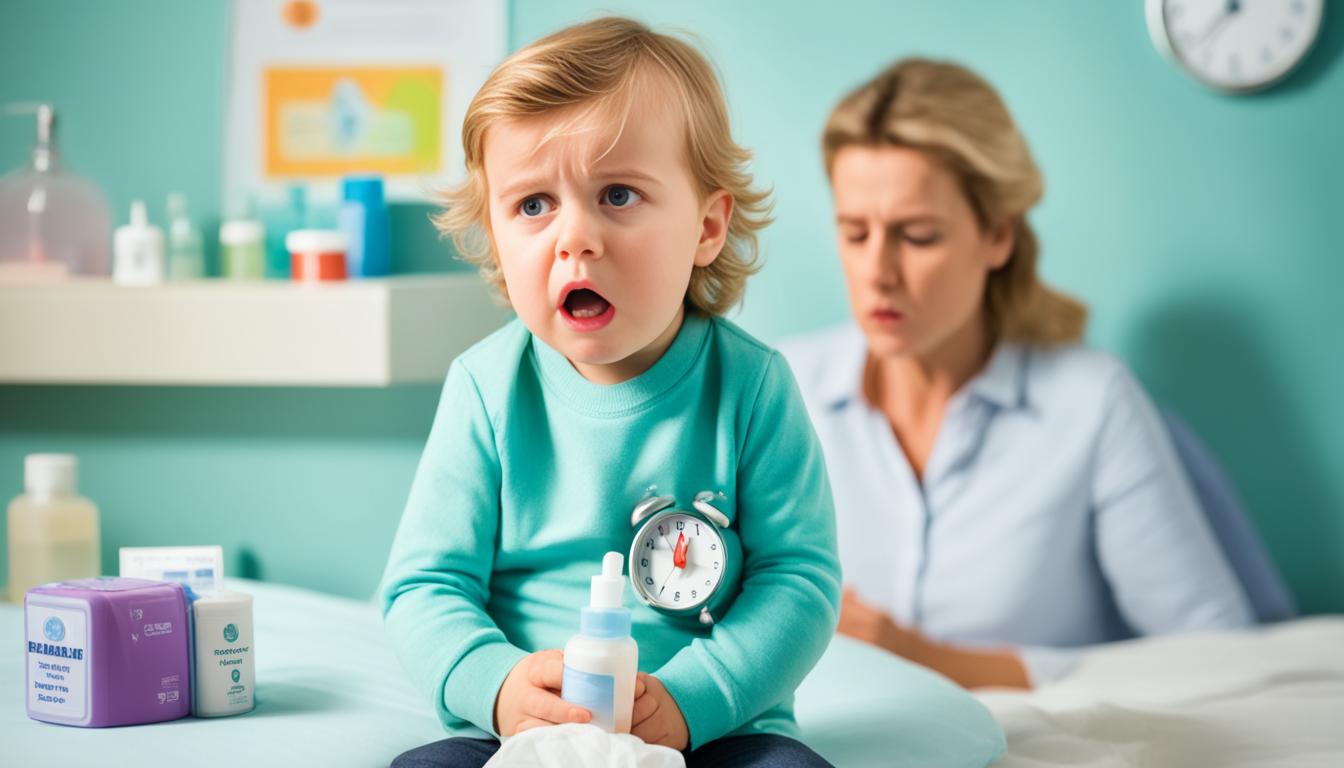Whooping cough, also known as pertussis, is an acute infectious disease. It is caused by the pertussis bacteria. It leads to severe coughing spells that can last for weeks. This can result in complications such as pneumonia and bronchitis. It is a highly contagious disease affecting both children and adults worldwide.
The main symptom of whooping cough is a severe and uncontrollable cough. It often ends with a high-pitched “whoop” sound when trying to catch the breath. Early symptoms include fever, runny nose, and a mild cough.
As the disease progresses, the coughing increases in frequency and intensity. This can lead to breathing problems. Other symptoms include red eyes and swollen neck veins.
Whooping cough mainly spreads through respiratory secretions and direct contact. It has an incubation period of about 7 to 20 days. The disease is most contagious in its early stages. Vaccination is key to preventing whooping cough. A series of doses is recommended for young children to ensure lasting immunity.
Treatment options for whooping cough include antibiotics. These can help control bacterial spread and lessen symptom severity. In severe cases or when complications occur, stem cell therapy might be considered. Stem cells can regenerate damaged tissues and help in the healing process.
Seek medical attention if you suspect whooping cough in yourself or your child. Early diagnosis and treatment are vital. They can prevent complications and lessen disease severity.
Key Takeaways:
- Whooping cough is an acute infectious disease caused by the pertussis bacteria.
- Main symptoms include severe coughing, fever, and difficulty breathing.
- Vaccination is the most effective way to prevent whooping cough.
- Antibiotics can help control the spread of the bacteria and reduce symptoms.
- Stem cell therapy may be considered for severe cases or complications.
Epidemiology and Causes of Whooping Cough
Whooping cough is known as pertussis and is very contagious, spreading worldwide. It was very serious before vaccines, mainly affecting malnourished kids under 5, with many deaths.
The main cause is Bordetella pertussis, a type of bacteria. It is spread through the air or by touching an infected person.
The time it takes from getting infected to showing symptoms can be 7 to 20 days. You can still spread it before feeling sick. It’s most contagious early on, when the lungs are inflamed.
It’s important to learn about whooping cough’s spread and causes. This helps make vaccines and spread awareness. Working together, we can lower the disease’s impact.
Studying the causes and spread of whooping cough helps us know how to stop it. Next, we’ll look at its symptoms, how it’s diagnosed, and how to prevent it more.
Symptoms, Diagnosis, and Prevention of Whooping Cough
Whooping cough, or pertussis, starts with mild symptoms. These can include a light cough, a runny nose, and a small fever. But, it gets worse with severe coughing fits. During these fits, patients might find it hard to breathe and feel very tired. Some telltale signs are red eyes, neck veins that stick out, and a “whoop” when they breathe in. This can be very scary, especially for kids.
Doctors diagnose whooping cough with lab tests. They look for the pertussis bacteria or the body’s response to it. Tests like swabs of the nose and throat, and blood tests, help find out for sure. Diagnosing it quickly is key to stop it from spreading more.
Preventing whooping cough is best done through vaccination. Everyone, especially kids and pregnant women, should get the pertussis shot. This helps keep the disease from spreading. Other steps include separating sick people, keeping things clean, and teaching others about it. Together, these actions help keep whooping cough under control.

